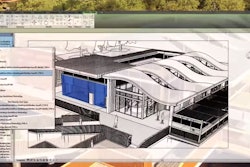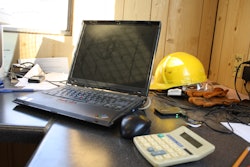
From cutting-edge building technologies to innovative construction methods and better decision-making systems, projects are getting smarter. Given the rapid development of emerging construction opportunities, owners should demand faster projects, lower costs and better buildings. Here are 10 trends that will shape and improve construction projects in 2016 and beyond.
1. Detailed 3D BIM modeling
Architectural models have changed. Instead of 2D drawings, 3D computer designs using Building Information Modeling (BIM) are becoming the standard, providing owners better visualizations. And today, these are no longer limited to architectural models but also models of specific building systems. Subcontractors’ design consultants use BIM to model structural engineering, mechanical, electrical and plumbing systems, ductwork, steel work and more. Combined with clash detection programs, designers can ensure no systems interfere with each other, preventing field coordination problems before they arise on the jobsite.
2. Cost and schedule modeling with 5D Macro-BIM
More and more design firms are adopting 5D Macro BIM at the earliest stages of design. These models show owners how early design concepts affect cost, schedule and constructability, allowing them to evaluate large-scale options and make informed decisions. These pre-construction designs used to be little more than napkin sketches; now they’ll be far more scientific and complete as the industry adopts 5D Macro BIM technology.
3. Pre-fabrication
Owners are increasingly realizing value as construction firms pre-fabricate building elements off-site. Instead of sequentially constructing facilities, contractors are starting to deliver multiple project elements at the same time to streamline schedules. While subcontractors pre-fabricate walls off-site, a contractor pours the foundation. With some of the most technical work performed off-site, in a more controlled environment, safety is improved, too. Combining pre-fabrication with 3D BIM, project teams avoid potential conflicts regarding the use of building space. And owners see a safer, faster, less expensive project.
4. Energy-saving building systems
Design and construction firms are increasingly bringing energy-efficiency analysis into the early design and construction process. Builders, owners and architects have increasing opportunities to model how different energy-efficient solutions affect a build. With the use of Life Cycle Cost Analyses and Sustainable Return on Investment (SROI) reports, owners can make informed decisions to achieve a higher ROI and overall building value with green construction.
5. Smart buildings
Buildings are becoming increasingly connected, with systems that provide data monitoring and remote access. Technologies are emerging to allow owners to not only track their facility’s systems but also automate them. For example, distribution center lighting can be set to automatically turn on in specific zones and turn off when not in use, delivering significant energy savings to owners. One day, smart buildings will likely become the norm.
6. Integrated mobile technology and information on jobsites
Construction teams are increasingly using mobile devices to file reports and share information on jobsites, streamlining the construction process. The use of this technology reduces costs while improving the reliability of reports and jobsite documentation. Using custom applications on mobile devices, the project team has instant answers to questions that would have previously slowed down a project with trips to jobsite trailers for plan evaluations or calls to the architect. Pictures of jobsite progress can be taken, and Quality Assurance can be improved.
7. Robotic automation
Some jobs in a construction project involve repetitive manual labor and can be automated. Robots and automated technology are emerging to handle certain tasks, such as robotic masonry and brick laying, and will be integrated into projects over the next few years. Skilled workers who can oversee and work in conjunction with robots will become increasingly important as well.
8. Unmanned Aerial Vehicles (UAVs)
Unmanned Aerial Vehicles (UAVs) are small devices with rotors and an on-board camera that takes stills or sends video to a live feed. Some can be piloted from an iPad, iPhone or Android device. Project teams are exploring their use in surveying to digitize geographical terrain and create 3D models of a site prior to construction.
UAVs can aid in remote jobsite monitoring, inspections and safer evaluations of hard-to-reach areas, such as 80 feet up a building or underneath a bridge. They can sit atop buildings, monitoring energy usage with thermal readings. And upon project completion, UAVs provide aerial building views and can be a marketing tool for those who want to highlight projects or properties.
Legality questions remain, but in 2016 the FAA is expected to define licensure requirements for the commercial use of UAVs.
9. 3D Printing in construction
A 3D printer is a machine that connects with a computer interface to process 3D designs. Then, using an extruder filled with a hot, liquid material (almost like a glue gun), prints the 3D design layer by layer. In the future, this technology may impact construction.
As projects increasingly use detailed 3D models, 3D printing is a logical future progression. Already, firms have printed houses using giant 3D printers with cement and glass materials. In the last decade, the technology has rapidly progressed.
Its benefits include reduction of health and safety risks, the use of recyclable materials, waste reduction and the capability to build otherwise unfeasible design concepts. In the near future, some commercial project teams may 3D print building components, providing savings and schedule reduction.
10. Enhanced jobsite safety
As technology moves workers further and further away from the most dangerous tasks, construction projects should get safer. Each year, workers die and sustain injuries from preventable jobsite accidents. It’s one of the biggest problems in construction. The industry already has well-established safety practices, and combined with technology, jobs should be less dangerous.

















